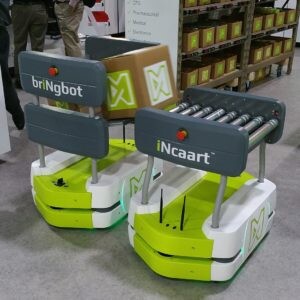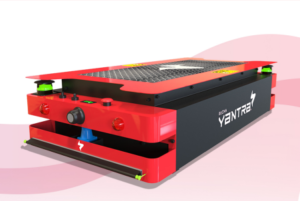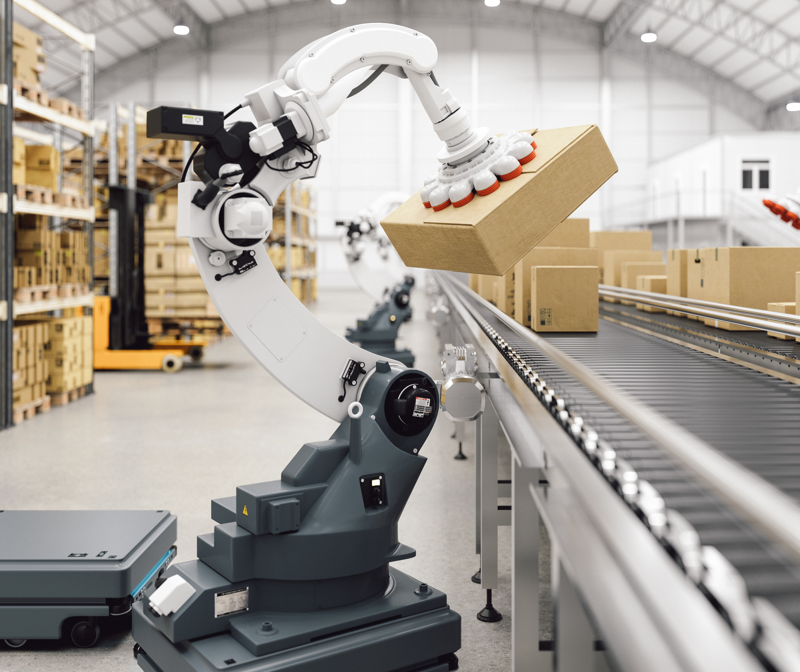Autonomous Mobile Robots and the Future of Supply Chain
How can autonomous mobile robots solve supply chain issues?
Autonomous Mobile Robots (AMRs) are robots which can understand, move through and act within their environment without being overseen directly by an operator. This type of robot has become increasingly popular within supply chains as the implementation of AMRs helps to improve efficiency and reduce labour costs.
One of the more important parts of a supply chain is the warehousing system, and it is here where AMRs are most present. It is imperative that the warehouses within supply chains operate efficiently so as to ensure that other stages of the chain can continue to work within their allocated timeframes.
Changes in Recent Years and Development of Autonomous Mobile Robots

The Covid-19 pandemic and the resulting global economic difficulties have meant that it is more important than before to ensure that every stage of supply chains are optimised. This is due to companies needing to plan around cost cuts and Covid restrictions as well as changes in demand.
With this prominent change in supply chains, Autonomous Mobile Robots have become more common within warehouses. This is because they do not need to adhere to Covid restrictions and they are able to cope with the increased demand on eCommerce warehouses due to lockdowns.
Alongside the developments in AMRs brought on by the Covid-19 pandemic, online shopping has increased the usage of AMRs. Over the last few decades, the rise in online shopping and decrease in processing and delivery times have necessitated development in new warehouse solutions. With next day delivery and increased demand, supply chains have had to adapt to the new norms.
How Autonomous Mobile Robots Help in Supply Chains

Autonomous Mobile Robots are able to automate warehouse operations, removing the need for human workers to perform repetitive tasks. This in turn reduces the limitations of human error in supply chains, especially in pick and pack processes. AMRs increase efficiency and are more resilient than human workers.
With the addition of robotic arms, AMRs are able to pick products and fulfil orders. This increases the efficiency of delivery times for online orders, which as previously mentioned, have increased dramatically in number over the last few decades.
Advancements in robotics are proving successful with regard to AMRs, with increases in flexibility, dexterity and reach. This allows them to work more efficiently for commercial and industrial warehouses.
Drawbacks of Autonomous Mobile Robots on Supply Chains
Although AMRs are more efficient than human workers, they can be expensive to install and maintain. Their initial costs of purchase and installation can be large, especially if investing in state of the art technology. Alongside this, their maintenance costs including breakdown and electricity fees can become costly. However, despite these costs, many business scholars believe that they are the future of supply chain optimisation.
These drawbacks can also be overcome through establishing a relationship with and utilising an experienced AMR and automation solution vendor as they will often provide high quality installation services alongside maintenance and support programmes.
Future of Supply Chain
Autonomous Mobile Robots are becoming increasingly common in warehouses. With the uncertainty caused by the Covid-19 pandemic and other geopolitical issues, we are witnessing unprecedented levels of supply chain risk. However, alongside this we are witnessing an increase in consumer behaviour with the rise of eCommerce and fast delivery. With both of these facts in mind, limiting human error and investing in solutions which will improve efficiency are top priorities for businesses. Thus AMRs are the future of the supply chain.




